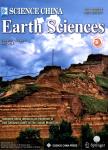Multiple-aged granitoids and related tungsten-tin mineralization in the Nanling Range, South China
Multiple-aged granitoids and related tungsten-tin mineralization in the Nanling Range, South China作者机构:State Key Laboratory for Mineral Deposits ResearchSchool of Earth Sciences and EngineeringNanjing University
出 版 物:《Science China Earth Sciences》 (中国科学(地球科学英文版))
年 卷 期:2013年第56卷第1期
页 面:2045-2055页
核心收录:
学科分类:081803[工学-地质工程] 08[工学] 0708[理学-地球物理学] 0818[工学-地质资源与地质工程] 0704[理学-天文学]
基 金:supported by National Natural Science Foundation of China(Grant Nos.41230315,40730423) Ministry of Science and Technology(Grant No.2012CB416704) China National Geological Survey Bureau(Grant No.12120113067300)
主 题:Nanling Range tungsten-bearing granites tin-bearing granites mineralizing potential ore-forming peculiarities
摘 要:The Nanling metallogenic belt in South China is characterized by well-developed tungsten-tin mineralization related to multi- ple-aged granitoids. This belt is one of the 5 key prospecting and exploration areas among the 19 important metallogenic tar- gets in China. Important progress has been made in recent years in understanding the Nanling granitoids and associated miner- alization, and this paper introduces the latest major findings as follows: (1) there exists a series of Caledonian, Indosinian, and Yanshanian W-Sn-bearing granites; (2) the Sn-bearing Yanshanian granites in the Nanling Range form an NE-SW trending aluminous A-type granite belt that stretches over 350 km. The granites typically belong to the magnetite series, and dioritic micro-granular enclaves with mingling features are very common; (3) the Early Yanshanian Sn- and W-bearing granites pos- sess different petrological and geochemical features to each other: most Sn-bearing granites are metaluminous to weakly per- aluminous biotite (hornblende) granites, with zircon tHe(t) values of ca. -2 to -8, whereas most W-bearing granites are peralu- minous two-mica granites or muscovite granites with CHf(t) values of ca. -8 to -12; (4) based on the petrology and geochemis- try of the W-Sn-bearing granites, mineralogical studies have shown that common minerals such as titanite, magnetite, and bio- tite may be used as indicators for discriminating the mineralizing potential of the Sn-bearing granites. Similarly, W-bearing minerals such as wolframite may indicate the mineralizing potential of the W-bearing granites. Future studies should be fo- cused on examining the internal relationships between the multiple-aged granites in composite bodies, the metallogenic pecu- liarities of multiple-aged W-Sn-bearing granites, the links between melt evolution and highly evolved ore-bearing felsic dykes, and the connections between granite domes and mineralization.



